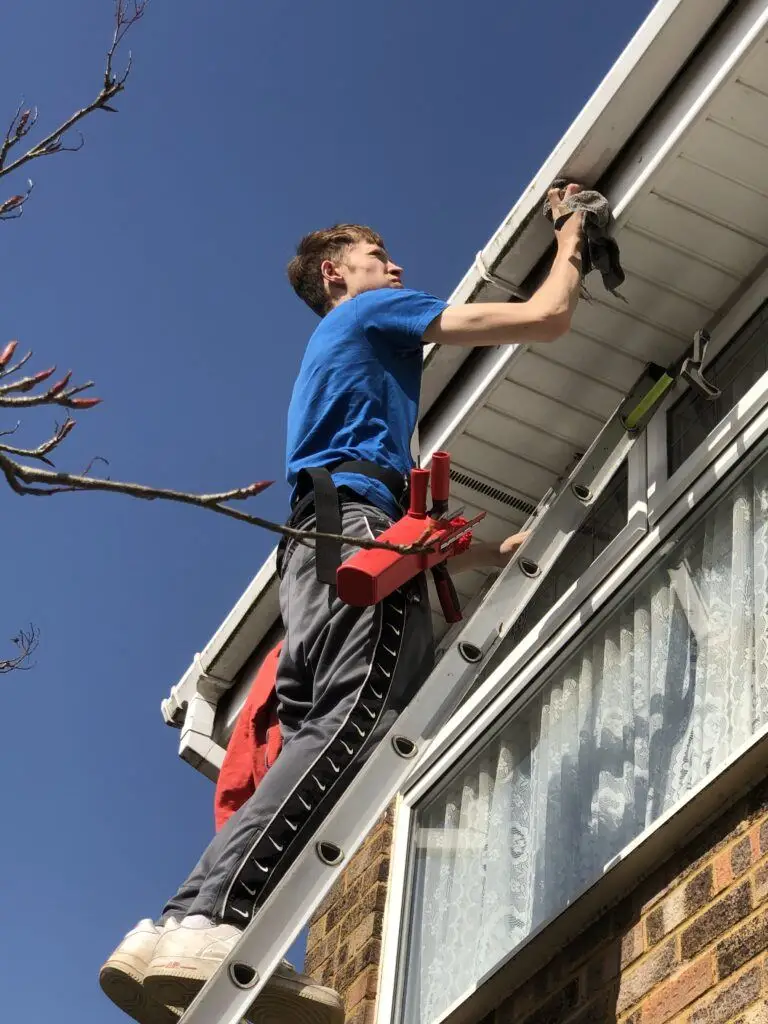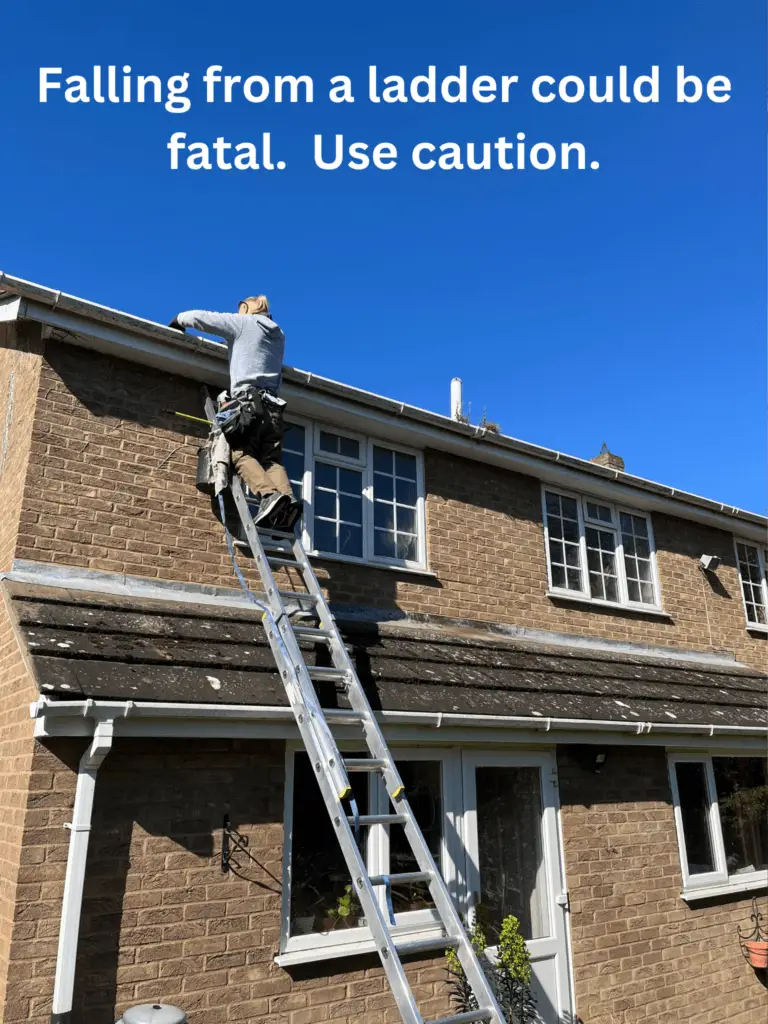Working at heights demands real attention to safety, especially when using ladders at significant heights such as 5 metres (gutter height on a two storey house). Ladders are great tools for reaching heights, but their misuse can lead to serious accidents. Here we look at critical aspects of ladder safety.
1. Equipment Inspection and Selection
Before climbing a ladder, check it. This includes checking for any visible damage, loose parts, or defects that may compromise its safety. The ladder should conform to current safety standards.
Furthermore, selecting the appropriate ladder for the task is paramount. Different types of ladders—such as step ladders, extension ladders, and platform ladders—are designed for specific purposes. Choose the right ladder.
2. Placement and Stability
The correct placement of the ladder is crucial in preventing a fall. Before climbing, ensure that the ladder is positioned on a stable, level surface. If the ground is uneven, use ladder levelers or leg extenders to maintain stability. In cases where the ladder cannot be placed on a stable surface, consider using a stabiliser.
At first floor level, even a slight imbalance can lead to a dangerous fall. Avoid placing ladders near doors or windows. A ladder must be positioned at a safe angle, about 75 degrees, or 1 foot out for every 4 feet up.
3. Climbing and Descending
Safe climbing and descending techniques are fundamental to ladder safety. Face the ladder while going up or down and maintain three points of contact with the ladder at all times. This means keeping two hands and one foot or two feet and one hand in contact with the ladder rungs. Grip the rungs of the ladder with your hands, NOT the sides of the ladder.
Avoid overreaching, leaning too far to the side, or standing on the top rungs of the ladder.
Conclusion
If you have any misgivings about working at heights, especially at 5 metres, get a professional to do it.


Leave a Reply